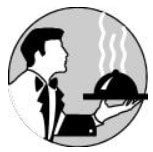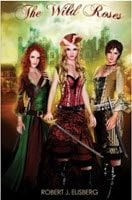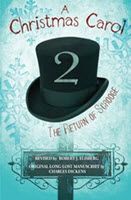|
This is a reprint of a column originally written on The Huffington Post in 2009. And this year is the 11th anniversary of the actual event itself, Some stories simply demand repeating. Or better put, demand not being forgotten. This is one of them. April 27, 2009 Oh, Say Can You Sing? A National Anthem to Remember As I prepared to write about an act of uncommon decency by a professional athlete, I realized that calling it that was unfair, that it diminishes what happened, because this was simply an act of uncommon decency, period. That it happened on such a high level and under such a bright microscope might likely stir the heart more, but it's the act itself that is ultimately what stirs us to begin with. Who it was and when it took place simply moves it up the pedestal. Today is the sixth anniversary of Maurice Cheek's moment on the pedestal. There is in the American consciousness for notable performances of the National Anthem at sporting events. Jose Feliciano's evocative singing at the 1968 World Series in Detroit was the first to interpret the "Star Spangled Banner" before a national audience. Because 1968 was one of the most tumultuous years in U.S. history, many at the time were so outraged that it took his career years to recover. Today, the rendition not only seems tame, but one of the most tender and beautiful. (And among the least known. If you've never heard it, do yourself a favor and click here to listen.) Whitney Houston gets mentioned often for her rousing rendition at the 1991 Super Bowl, during the Gulf War. For many, Marvin Gaye's deeply soulful performance at the 1983 NBA All Star is the most memorable. But for sheer emotional joy, it's hard to top what happened on April 27, 2003, before Game 4 of the NBA playoffs between the Portland Trailblazers and Dallas Mavericks. Context only adds to the story. So, once again: This was the playoffs. This is what all professional athletes live for, what their year is about. The regular season is a prelude, an effort to get into the post-season and be in place to win the league championship, to become a part of your sport's history. Everything centers on this. As the start of each playoff game nears, as the roaring crowd is at its highest pitch, as players put on their proverbial "game faces" and the battle is moments from beginning, all external thoughts get filtered out, and focus is completely, solely on their task ahead. The National Anthem, for most athletes, must be one of those external influences. More than most of us, who hear the "Star Spangled Banner" largely on special occasions, professional athletes have heard the National Anthem played before every single competitive game they've played. Game after game repeatedly each season, and season after season, for decades. Relentlessly. As meaningful as the song is, it is also just part of the ritual for a professional athlete, focused on the game, geared up for the game, anxious to start the game. Silent, not singing, maybe not even hearing the music. Waiting for the National Anthem to be played, and finished, so that they can finally start what they're there for. It's likely as much background noise as it is patriotic uplift. And so it must have been as the Trailblazers and Mavericks prepared for their playoff game to start. Stepping out onto the court was Natalie Gilbert, a 13-year-old girl. Just another National Anthem, just another youngster who won a contest, just another two minutes the crowd wanted to get past for the game they were there to see, to start. And she started fine. A little hesitant, since it's a frightening occasion for a child, with a national audience, flashing lights and a military guard. But in her wavering voice, she was prepared. Except that a few lines in, the high pageantry of the moment got her, and something went very wrong. She totally, thoroughly forgot the words. A young 13-year-old child, standing in front of over 10,000 people, lost. Alone. And that's when Maurice Cheeks showed the kind of person he was. Maurice Cheeks had had a very good NBA career as a player. He played for 15 years and was selected to four All Star games. When he retired, he was the all-time leader in steals and fifth in assists. He averaged over 11 points a game. And then he later became a coach, the position he was currently in for the Portland Trailblazers. It was Cheeks who was responsible for his team, responsible for keeping them focused on the game, responsible for guiding them. But he saw a 13-year-old girl in trouble. And that's when Maurice Cheeks showed the kind of person he was. Immediately. Cheeks always had a reputation in the NBA as a good guy. But he was about to prove it on a national stage. And what happened next - not just with Maurice Cheeks, but eventually with all the jaded players whose minds had been previously-focused on their game, an entire stadium of basketball fans there to see basketball, even the opposing white-haired coach Don Nelson - is just enthralling. The moment is wonderful, but how it builds and surprises is even better. And at the end, this tiny girl looking up at the giant of a man - who stayed around, refusing to leave her side and return to his team - with her face awash with relief, a huge hug, and the clear words mouthed, "Thank you," is all you need to see to why it's hard to top what happened on April 27, 2003, before Game 4 of the NBA playoffs for sheer emotional joy. Six years ago today.
0 Comments
Leave a Reply. |
AuthorRobert J. Elisberg is a political commentator, screenwriter, novelist, tech writer and also some other things that I just tend to keep forgetting. Feedspot Badge of Honor
Archives
May 2024
Categories
All
|
|
© Copyright Robert J. Elisberg 2024
|






 RSS Feed
RSS Feed